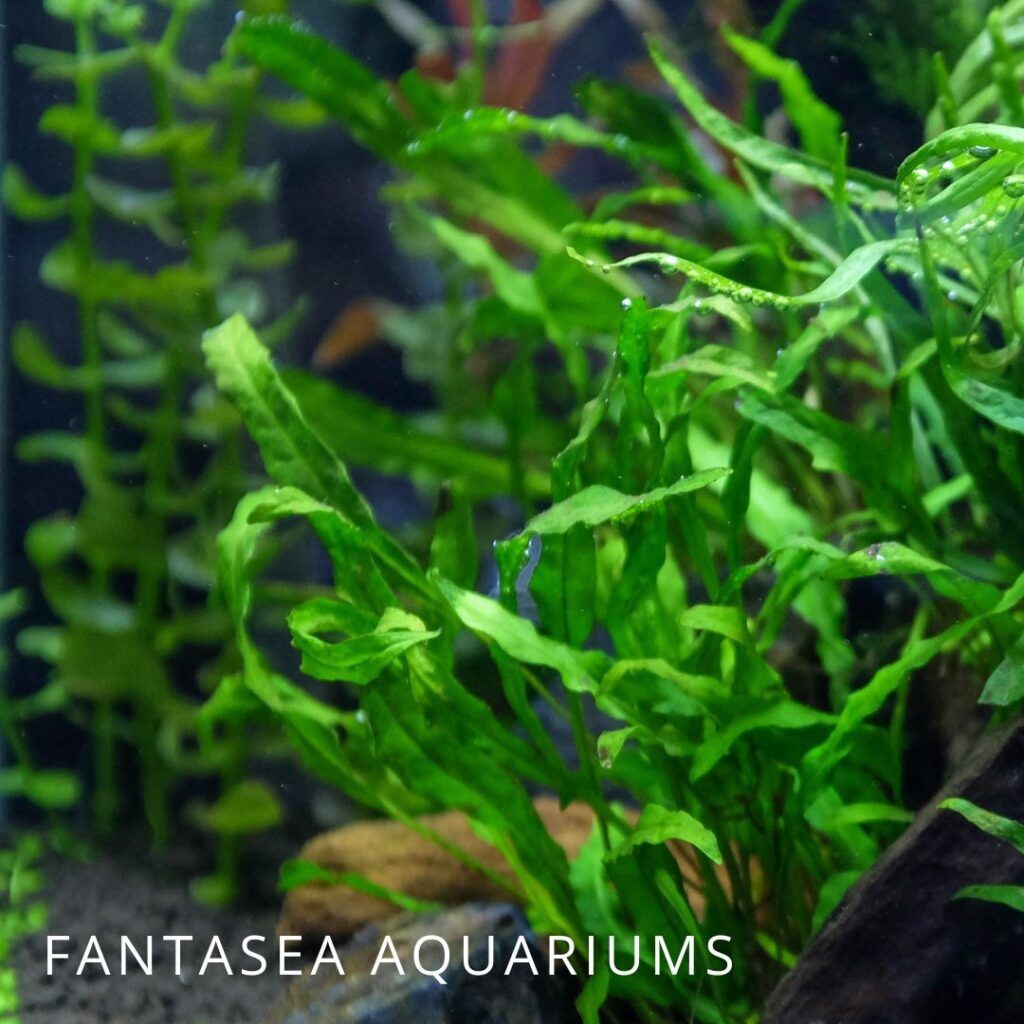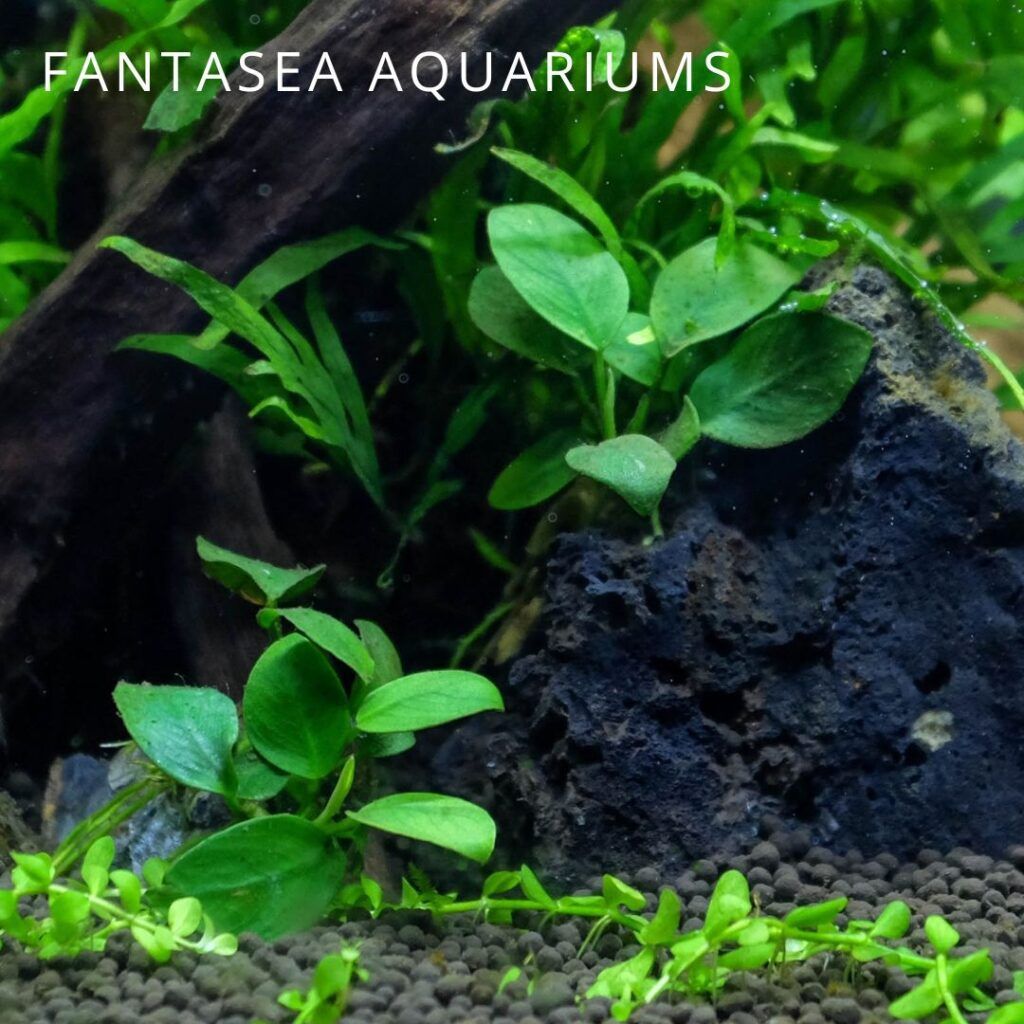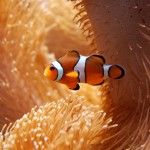In need of some extra green in your home? As most aquarists know, a planted aquarium is just what you need to complete the urban jungle look. Here at FantaSEA Aquariums, we adore aquatic greenery, and today we’ll be sharing some of our favorite plants with you. Don’t worry: all are easy to grow and suitable for beginners.
Dwarf Hairgrass (Eleocharis acicularis)
Let’s kick off this list with our favorite foreground plant: Eleocharis acicularis, also known as dwarf hairgrass. As its name suggests, this is the perfect species to create an underwater lawn. It looks quite decorative when used in the foreground of the aquarium and as an added bonus it’s easier to grow than most other carpeting plants.
As with most foreground plants, supply at least medium light if you’d like to grow dwarf hairgrass. To plant this species correctly, separate a store-bought cup or pot into pieces that all contain at least a few roots and leaves. Place these into the substrate; try using plant tweezers if you’re having trouble doing so with your hands!
Java Fern (Microsorum pteropus)
A great choice for beginning aquarium plant growers, Java fern is appreciated for its sturdiness. This rheophyte grows on rocks and driftwood rather than in the soil, which means it can’t be uprooted by curious fish. Its leaves are hard and leathery, making them unattractive to herbivores.
Although this plant is a slow grower, it’s definitely a good option if you’re looking for something that won’t wither and die from the slightest inconvenience.
To ‘plant’ Java fern, attach it to a porous surface like lava rock or driftwood. You can do so using fishing line and rubber bands, but our favorite method is actually even easier: superglue is aquarium-safe once it dries and ensures the plant stays put until it has rooted.
Christmas Moss (Vesicularia montagnei)
The majority of aquarists has heard of and probably even grown Java moss at one point. It’s loved for its hardiness and dense growth pattern that looks great in aquascapes and offers young and vulnerable fish some much-needed protection. But did you know there are more aquatic mosses out there that are almost equally easy to grow and look even more decorative?
Our favorite aquarium moss is actually not the ever-popular Java moss, but the closely related Christmas moss. Named after the fact that its fronds grow in a Christmas tree-like shape, this lush and undemanding moss is perfect for growing on driftwood or even as a (wall) carpet.
Have a look at the full Christmas moss plant care guide to find out everything you need to grow this moss in your aquarium.
Anubias
Like Java fern, Anubias has evolved to withstand strong water flows by attaching itself very firmly to porous surfaces using a uniquely strong root system. This plant’s sturdy leaves, undemanding nature and ability to thrive in low-light conditions make it a good option for those setting up a low-tech aquarium system. No fancy CO2 systems or lighting rigs: just simple plants and some fish.
The most popular Anubias variety available in the aquarium hobby is Anubias barteri. This plant is very easy to grow and forms large leaves that make ideal hiding-, resting- and foraging spots for different species of fish and shrimp.
Looking for more plants that don’t mind being in the shade? Have a look at our article on low-light aquarium plants.
Cryptocoryne
Love the jungle look? So do we, which is the reason we’re very fond of plants in the genus Cryptocoryne. Although these can take a while to establish (and often experience some melt after being moved), they grow exceptionally lush once they do. There are quite a few Crypts out there, but the most common and probably the easiest variety is Cryptocoryne wendtii.
For the best results, plant your Cryptocoryne wendtii in the substrate and leave it alone as much as possible. Extensive leaf loss can happen after relatively minor changes, but don’t worry. The plant is not dying, it’s just adapting. It’ll come back even lusher once it has gotten used to the water values and other factors in your aquarium.
Vallisneria spiralis
Unlike its name suggests, Vallisneria spiralis is not one of the varieties of ‘Vals’ that grows curly leaves. Instead, it produces tall foliage that closely resembles marine seagrass. A very attractive addition to your planted tank, and to make things even better it’s a fast grower that doesn’t need much specific care.
Unlike some other Vallisneria types such as ‘Americana’, spiralis doesn’t grow extremely large, making it suitable for smaller aquariums as well.
Plant your Vallisneria in the substrate, making sure not to bury its crown. Co2 systems and plant food are not needed, although some root tabs might be appreciated. Give the plant some time to establish and you’ll start seeing new leaves and even runners pop up before you know it!
Need help?
All of the aquarium plants described in this article are relatively easy to grow, but unfortunately that doesn’t mean they’re maintenance-free or indestructible. If you’re worried you have a black thumb or simply lack the time to maintain a (planted) fish tank, we can help. FantaSEA Aquariums sets up and maintains your aquarium, which means all you have to do is enjoy it.
Sound good? Contact FantaSEA Aquariums here for a quote and we’ll get back to you soon.










